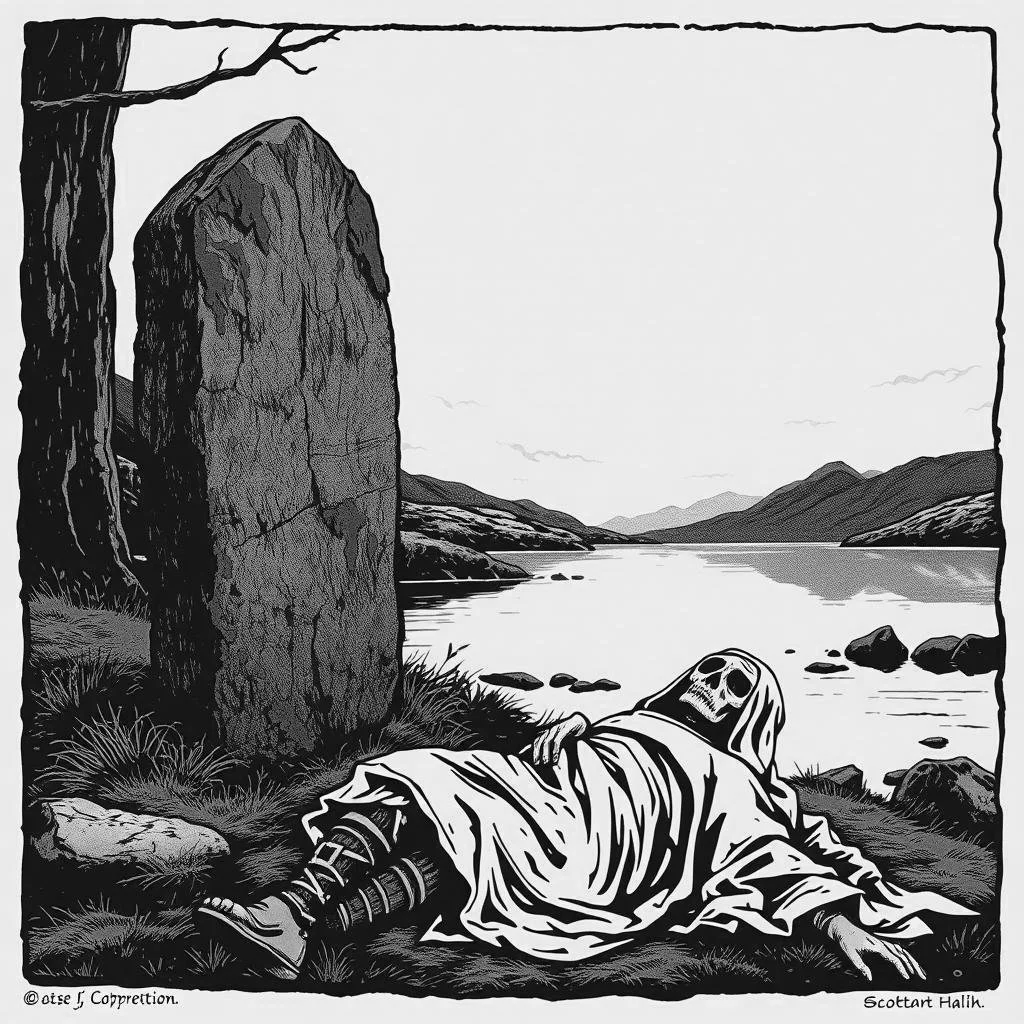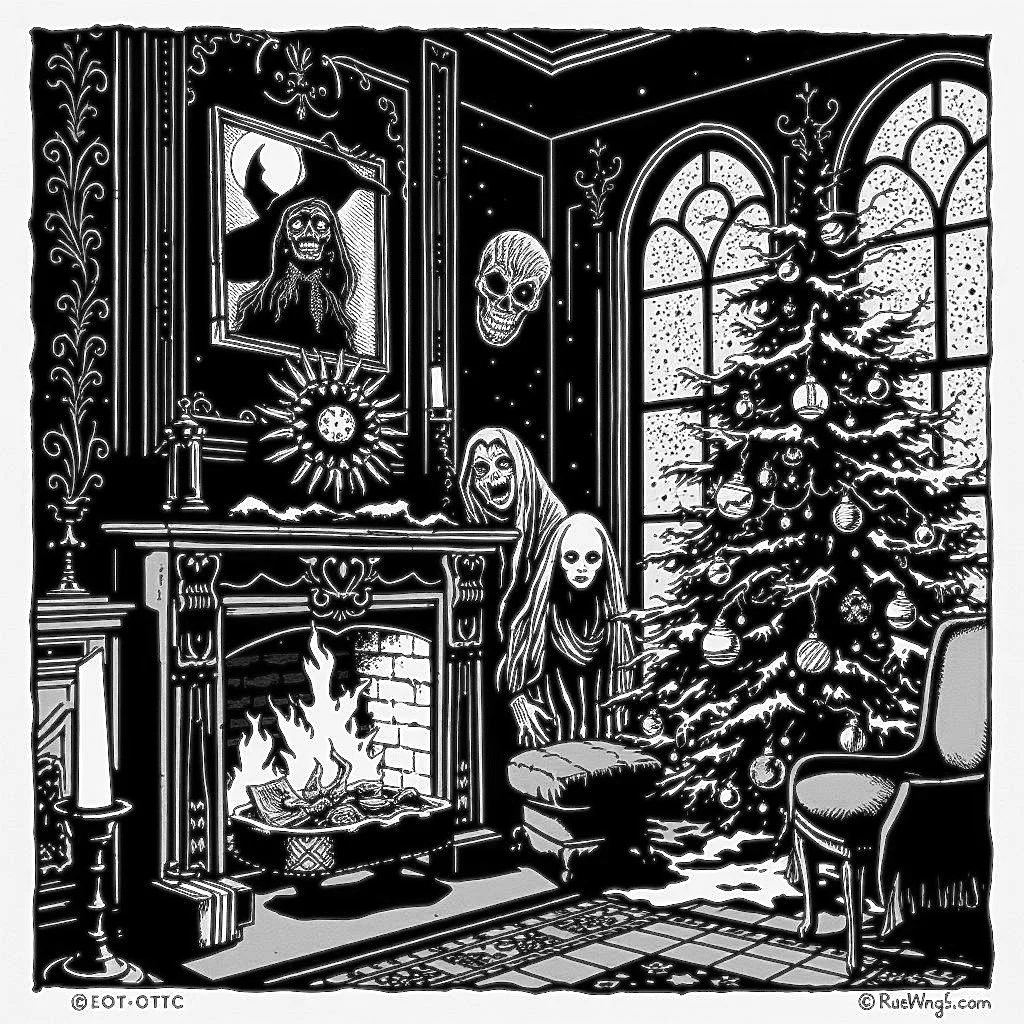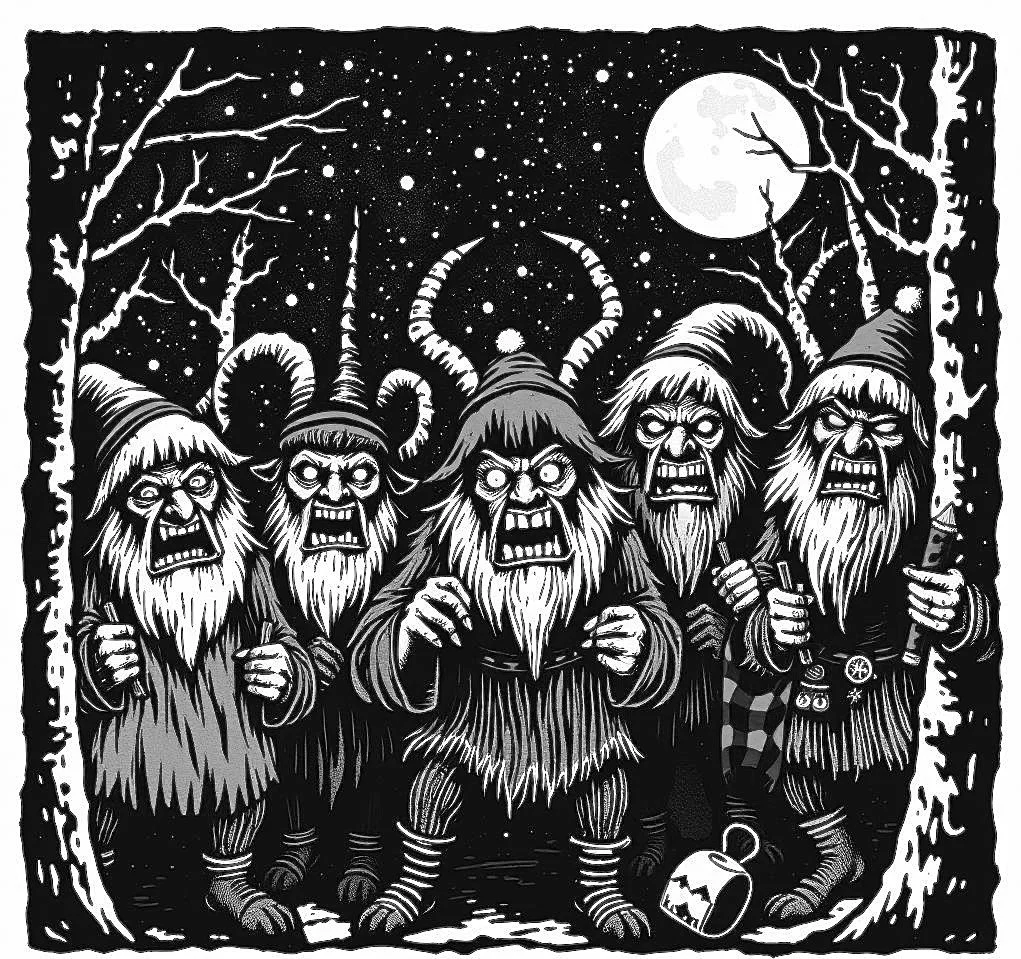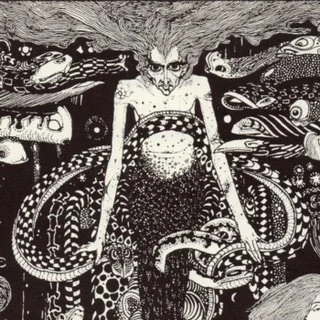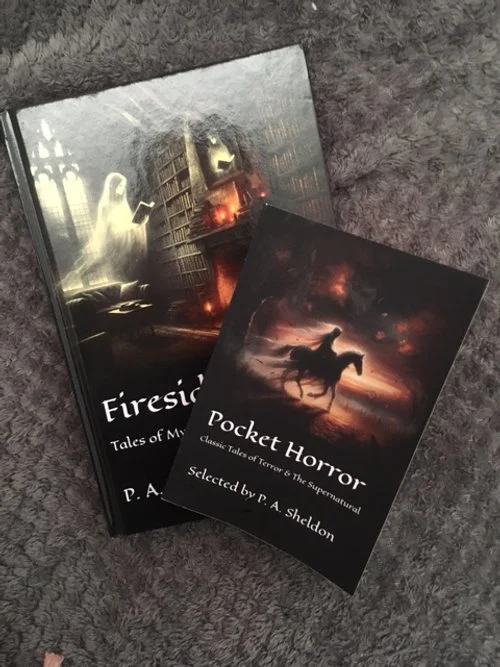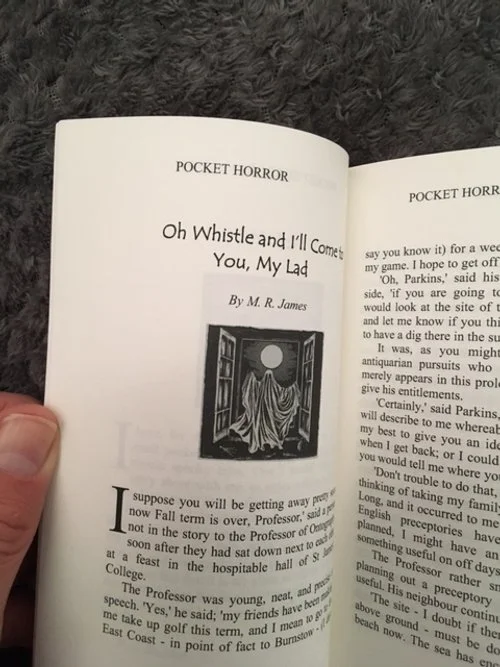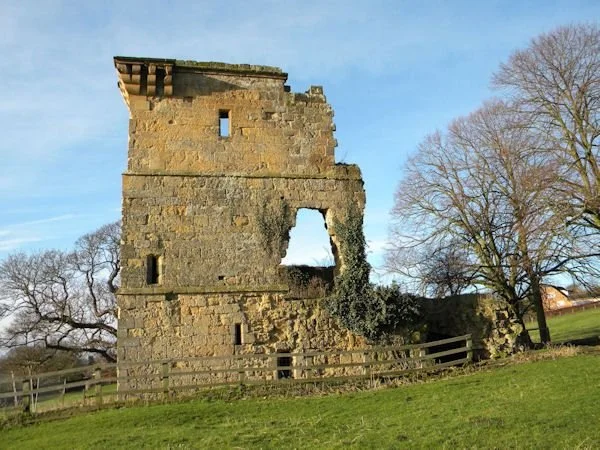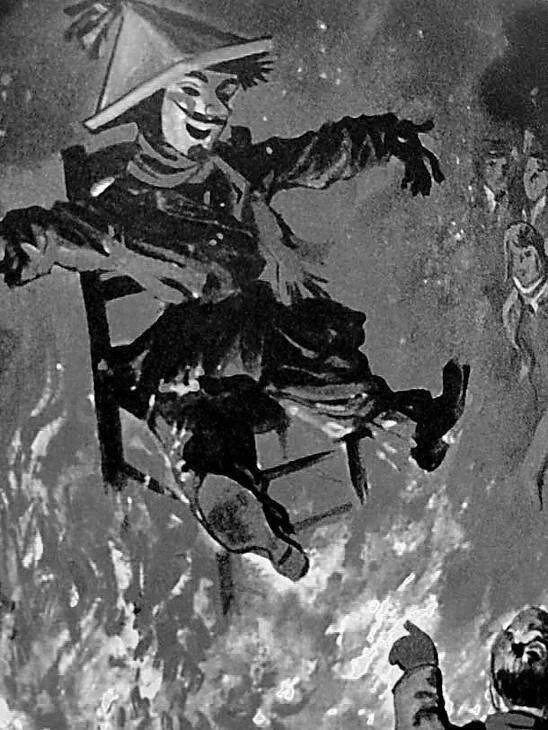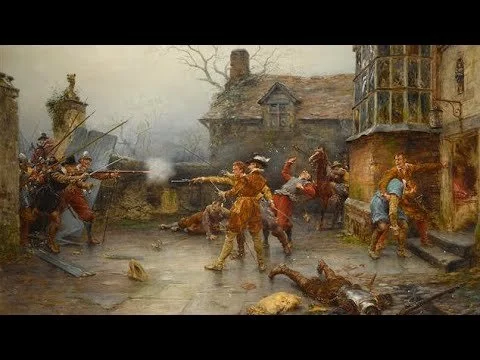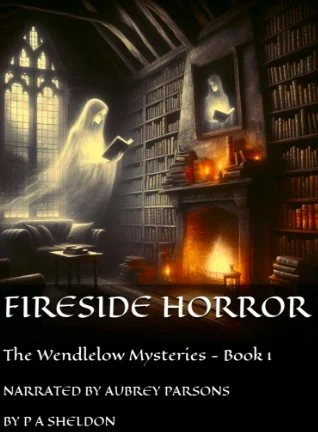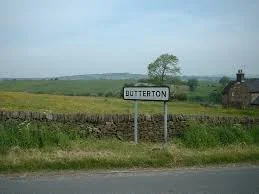Irish Folklore - The Garvagh Vampire
Abhartach - The Vampire Magician.
Garvagh from the Irish Garbhach, meaning 'rough place’ is a village in the County of Derry, Northern Ireland. It was founded in the early 17th Century. But long before its appearance the land about the area was infamous, as it was said to be the haunt of a Vampire, who went by the name of Abhartach.
Abhartach is the oldest recorded Vampire legend in Western Europe, dating back to 5th or 6th Century AD, and some people believe it may have been the inspiration for Bram Stokers ‘Dracula.’ Today this undead terror is said to be buried by an old thorn tree, and though his sepulchre is gone, it is believed that the rocks about the tree are the remains of its capstone.
Abhartach’s Grave is known as the ‘Slaghtaverty Dolmen’, a dolmen being an older term for a portal tomb. The word Slaghtaverty comes from the Irish ‘Sleacht Abhartach’, meaning Abhartach’s grave or grave-mound, it is located by a thorn tree, about which no grass is said to grow. Below is an account of this monstorous entity.
There is a place in the parish of Errigal in Derry, called Slaghtaverty, but it ought to have been called Laghtaverty, the laght or sepulchral monument of the abhartach [avartagh] or dwarf . This dwarf was a chieftain, a magician, and a dreadful tyrant, and after having perpetrated great cruelties on his people he was at last vanquished and slain by a neighbouring chieftain; some say by Fionn Mac Cumhail. He was buried in a standing posture, but the very next day he appeared in his old haunts, more cruel and vigorous than ever. And the chief slew him a second time and buried him as before, but again he escaped from the grave, and spread terror through the whole country. The chief then consulted a druid, and according to his directions, he slew the dwarf a third time, and buried him in the same place, but this time with his head downwards; which subdued his magical power, so that he never again appeared on earth. The laght raised over the dwarf is still there, and you may hear the legend with much detail from the natives of the place.
In a more recent versions of the story, Abhartach is said to drink the blood of his victims, and is referred to as one of the neamh-mairbh, or walking dead. He can only be stopped by being slain with a sword made of yew wood, surrounding his grave with thorns, and placing a large stone on top of the burial site.
Thank you for taking the time to read this blog my friend. If you enjoyed this creepy tale please consider purchasing a copy of my book '‘Fireside Horror’ available on Amazon and Audible., it may just be for you. Until next week stay spooky.
Ghostly Folklore - The Phantom Smuggler
John Smythe - The phantom smuggler.
Norfolk is in the East of England, it is a coastal county with the Sea, bordering its north and east coast. The west part of Norfolk is made up of fens, an area of gently undulating marshy lowlands. To the east is The Broads a network of rivers and lakes that extend into the neighbouring county of Suffolk.
Norfolk has a reputation as a haunted region with many stories of ghosts, it was a place notorious for smuggling in the 17th and 18th centuries. With crafty boatmen sneaking goods past the government excise men – officials responsible for collecting excise duty and upholding the ever unpopular tax laws - under cover of darkness.
There is a local legend, associated with the coastal village of Weybourne. It is said to be haunted by the spirit of a former smuggler named John Smythe, who can be heard about the area on certain nights. Here is the account of his tale.
According to the legend. One night, John Smythe and his fellow crew of smugglers were “replenishing their supplies” aka smuggling goods on to the shores of the pebble beach of Weybourne. John separated from them in order to meet up with a landlady from a local inn, promising he would be back by a certain time.
While John Smythe was gone, excise officers found out about the smuggling and made their way over to Weybourne. The smugglers were alerted that trouble was coming their way and headed back to their boat, waiting offshore for John Smythe to return.
But as John Smythe lost track of time and was late, the other smugglers believing he had been caught, rowed to their ship. While the men were still rowing back, Smythe returned and whistled to attract their attention.
Instead of being rescued, John Smythe found himself cornered by custom officers who were hiding nearby. He headed into the water, knowing the Kings men would not follow, and still hoping the crew would come back to rescue him. But, unable to swim, John Smythe would drown, still whistling for help.
It is said that poor Johns ghost can be heard about the district on the nights of a full moon, still whistling for his crew. Some unfortunate people also claim to have seen his apparition stalking Weybourne’s pebble beach, appearing only once the whistling has finally faded away.
Thank you for taking the time to read my blog if you enjoy ghost Stories and folklore please consider purchasing a copy of my book, ‘Fireside Horror’, available on audible, and in Kindle, Paperback and Hardback from Amazon. Links below.
New Years Folklore - The Hogmanay Horror
The Stone and one of its victims…
Hogmanay, is a very important date in the Scottish calendar, the word Hogmanay refers to the last day of the old year, and has become associated with the celebration of the New Year in the Scottish tradition. There are many customs associated with this date, including the giving of gifts and a tradition called first foot, where the first person to enter the house is believed to bring good fortune for the coming year.
The Presbyterian national church, discouraged the celebration of Christmas in Scotland for nearly 400 years; in fact it only became a Scottish public holiday in 1958. As such many communities celebrated Hogmanay with much vigour and enthusiasm, and the 1st and 2nd January were declared public holidays.
There is a very spooky tale, told around Hogmanay, in the parish of Birsay, on the Island of Hrossey, the largest of the Orkney Islands, located off the North East coast of Scotland. It speaks of a walking standing stone that terrorises the Islanders every New Year’s Eve. The tale is enclosed below.
In the parish of Birsay there is a Druidical stone, with a rather strange and tragic history attached to it. The legend runs that every Hogmanay night, as the clock strikes the hour of twelve, this stone begins to walk or move towards Birsay Loch. When the edge of the loch is reached it quietly dips its head into the rippling waters. Then, to remain firm and immovable until the next twelve months pass away, it as silently returns to its post.
It was never considered safe for anyone to remain out of doors at midnight, and watch its movements upon Hogmanay. Many stories are current of curious persons who dared to watch the stone’s proceedings, and who the next morning were found lying corpses by its side.
The latest story of the kind is that of a young gentleman from Glasgow, who formed the resolve to remain up all night, and find out for himself the truth or falsehood about this wonderful stone. One Hogmanay accompanied only by the cold silvery beams of the moon, the daring youth began his watch. As time wore on and the dread hour of midnight approached, he began to feel some little terror in his heart, and an eerie feeling crept slowly over his limbs. At midnight he discovered that, in his pacing to and fro, he had come between the stone and the loch; and, as he looked towards the former he fancied that he saw it move. From that moment he lost all consciousness, and his friends found him in the grey dawn lying in a faint. By degrees he came to himself; but he could not satisfy enquirers whether the stone had really moved and knocked him down on its way, or whether his imagination had conjured up the assault.
There is another tale, of a more tragic nature, related of this walking stone. One stormy December day a vessel was shipwrecked upon the shore of Birsay, and all hands save one were lost. The rescued sailor happened to find refuge in a cottage close by this stone; and, hearing the story of its yearly march, he resolved to see for himself all that human eyes might be able to discover. In spite of all remonstrance’s, he sallied forth on the last night of the old year; and, to make doubly sure, he seated himself on the very pinnacle of the stone. There he awaited the events of the night. What these were no mortal man can tell; for the first morning of the new year dawned upon the corpse of the gallant sailor lad, and local report has it that the walking stone rolled over him as it proceeded to the loch.
Thank you for taking the time to read this blog my friend, now let’s raise a glass, and toast the coming New Year.
Christmas Tradition - The Mari Lwyd
The strange Mari Lwyd.
Christmas Eve is upon us, children’s eye’s are sparkling with excitement, last minute preparations will be put in place in readiness for tomorrows Christmas Day meal. A glass of milk (or perhaps something stronger,) will be put on the fireplace, along with a mince pie, and maybe even a carrot for Rudolf. A small compensation for all the big Fella’s hard work.
There are many customs around this festive time of year, but amongst the most unusual is that of the Mari Lwyd. This tradition was primarily practiced in southern Wales, it is considered to be a form of Wassailing, of the home-visiting kind, rather than the Orchard Wassail. The home-visiting wassail is the practice of people going door-to-door, singing and offering a drink from the wassail bowl in exchange for gifts.
The Mari Lwyd itself consists of a horse's skull that is decorated with ribbons and affixed to a pole; to the back of the skull is attached a white sheet, which drapes down concealing the individual carrying it. Often the horses jaw is hinged, allowing it to open or close.
The custom was first recorded in the nineteenth century, it would occur between Christmas Eve and New Years. The name Mari Lwyd is thought to mean either Grey Mare or Gray Mary, and the Mari Lwyd could represent either a ghostly horse from the underworld, or a pregnant mare evicted from the stable in Bethlehem, to make room for Mary and Joseph.
The excitement began at dusk and lasted well into the night, the Mari Lwyd would travel the district accompanied by four to seven people dressed in brightly coloured rags and ribbons, sometimes members of the group would dress up as Punch and Judy, there was often a Merryman playing a musical instrument, they were usually led by a smartly dressed man.
They would approach a house, bang on the door, and a musical debate or battle would ensue between the occupants and those seeking entrance, with Mari’s group asking to be let in, and the owners making excuses. This was called a pwnco. I give an example of the opening lines to a Pwnco here:
Wel dyma ni'n dwad .
Gy-feillion di-niwad .
I ofyn am gennad .
I ofyn am gennad .
I ofyn am gennad i ganu.
This Translates to:
Well here we come.
Innocent friends.
To ask leave.
To ask leave.
To ask leave to sing.
Once inside, the entertainment continued with the Mari Lwyd running around neighing and snapping its jaws, creating havoc, frightening children (maybe even a few adults) while the Leader pretended to try to control it and The Merryman played music and entertained the householders. Who in turn would provide food and drink.
In 1941 poet Vernon Watkins published a poem entitled ‘Ballad of the Mari Lwyd,’ the poem received much praise, here it is:
Mari Lwyd, Lwyd Mari
A sacred thing through the night they carry.
Betrayed are the living, betrayed the dead
All are confused by a horse's head.
Thank you for taking the time to read my blog, I greatly appreciate it, and hope I have provided you with some pleasure. I do believe I hear the sound of sleigh bells on the wind, now is surely the time to retire to bed. Good Night my friends and I wish you a Merry Christmas and a Happy New Year.
Christmas Folklore - The Lady in Black
The Lady in Black.
It is merely a few days now before the big festive event, hopefully all your preparations have been completed and you can turn your attention to the many Christmas traditions – some universal, some unique to your own circle of family and friends – to be enjoyed over the coming days. One such tradition is the telling of ghost stories, this has fallen out of favor a little over the decades, but with your permission we will honor it now.
Bradley is a small village in the county of Lincolnshire in the north east of England, it is located a few miles outside the port city of Grimsby. The name Bradley is reported to mean 'broad wood' or 'wide clearing' and dates before the Vikings established the port of Grimsby (originally Grim's by).
Just to the south of this village is an area called Bradley Woods. This place was a favorite hunting ground of the Grimsby Major and the local Burgess, here they could pursue wild boar to their hearts content.
Bradley Woods is a place filled with unusual tales, but it is the Christmas Eve ghost that is the focus of this blog. This shade is known locally as ‘The Black Lady’ and her story runs like this.
Legend says that a young woodsman, his wife and baby lived in a small cottage in Bradley Woods. The woodsman was called to arms by Lord Yarborough to fight in the wars that were raging England. Many months pass and the woodsman does not return home. Every day the wife takes the baby to the edge of the woods to wait for the return of her husband. One day three horsemen from the enemy’s army pass through the woods and notice the woodman’s cottage. They attack the wife and ransack the cottage. As they are leaving, they snatch the baby and ride off into the woods taunting her as they go.
Heartbroken, the wife wandered the woods searching in vain for her child and husband, who never returned from the war, dressed in a flowing black cloak and a black hood, carrying on her never ending search.
Like so many local spooks the ‘Black Lady’ took on the role of a bogey creature, and was used to scare children in to good behaviour. Many local people claim to have encountered her ghost over the years, and Bradley Wood is not a place for the faint of heart, particularly in the hours of darkness. She is said to be seen flitting between the trees, a shadow amongst shadows, or sometimes her pitiful cries can be heard from afar, as she calls out to her missing son. But if you really want to be guaranteed of a meeting with this phantom, you must visit Bradley Woods on Christmas Eve, gather your nerve and call out the following words "Black Lady, Black Lady, I've stolen your baby!" three times. Then the lady will appear before you to reclaim her child.
Many thanks for taking the time to read this blog and supporting my book, it is greatly appreciated. Hopefully both have given you a few pleasing shudders, until next time Merry Christmas.
Christmas Folklore - The Phantom Highwayman
Old Gilbert.
The village of Marden can be found in the quaint county of Kent, in the south east of England. Tales are told of the lanes and roads about this little community, tales of a ghostly highwayman, doomed to re-enact his final fatal crime every Christmas Eve.
Highwaymen were robbers who plied their notorious trade on roads, robbing unfortunate travellers. They would normally travel by horse and so, were considered the social superior of footpads, who committed their crimes without the aid of a trusty steed. The first recorded use of the term highwayman comes from 1617. They have been somewhat romanticized, sometimes being referred to as ‘Gentlemen of the Road.’ And are the subject of many books, poems, songs and films.
The tale of Marden’s own phantom highwayman goes something like this:
Now the roads around the town of Marden in Kent were the haunt of a fearsome highwayman, known only as Gilbert. And one Christmas Eve, a man and his daughter were traveling in a horse-drawn coach to Hawkshurst, when Gilbert stopped them. The daughter managed to leap from the coach, but before her father could disembark, the horses became startled and bolted down the road with the man and his coachman in tow.
The two men struggled to get the horses back under control so they could go back and find the man's daughter, who had been left behind with Gilbert. But, when they got back to the scene of the attempted robbery, she was nowhere to be found. But they did find Gilbert, drenched in blood and dead as a doornail, sprawled on the ground with a dagger in his side.
So what happened? It seems Gilbert had – some months before – murdered the girls brother, upon realising who it was she pulled out a knife she kept on her person and stabbed the Highwayman to death in a fit of rage, before fleeing alone into the wild woods. It is said that when the poor girl was finally found she had gone quite insane.
So should you find yourself in Marden on Christmas Eve, and if you have partaken of enough liquid, festive cheer, why not take a midnight walk about the countryside, if local Legends is true, you may get to see the terrible events replayed in a hideous ghostly way.
I will leave you with a poem called ‘Windy Nights’ by Robert Louis Stevenson, although it never mentions a highwayman, whenever I read it I picture one in my mind, see what you think my friend. Finally if you enjoy ghostly folklore, please consider my book ‘Fireside Horror’ available on Amazon in Kindle, Physical or Audible format. Link after Poem.
Windy Nights By Robert Louis Stevenson.
Whenever the moon and stars are set, Whenever the wind is high, All night long in the dark and wet, A man goes riding by, Late in the night when the fires are out, Why does he gallop and gallop about?
Whenever the trees are crying aloud, And ships are tossed at sea, By, on the highway, low and loud, By at the gallop goes he. By at the gallop he goes, and then. By he comes back at the gallop again.
A Ghost Story for Christmas - A Free EBook
Merry Christmas
The promise of Christmas shines through the cold winter days, like a beacon of hope in this dark season. It is a time for the giving of gifts to friends and family and so - in this spirit - I have made one of my stories available to download for free.
The short story ‘Fireside Horror’ is a Christmas tale, the perfect story to read on a dreary afternoon, with a warm drink steaming by your side, and a pleasing fire casting its ruddy glow about the room.
Please enjoy this story by clicking the link below, and if you would like more free stuff please visit the DOWNLOADS section of my website. If you are interested in purchasing any of my books please visiting my SHOP.
Have a very merry, spooky Christmas my friend.
Christmas Folklore - The Chaotic Yule Lads
A Few of the Yule Lads.
Time ticks by, the days slowly pass, drawing us closer to Christmas. Every country has its own traditions and stories associated with the winter season, and Iceland is certainly no exception
Iceland is a Nordic Island nation located between the Arctic Oceans and the North Atlantic. It is geologically active, with many volcanoes, as well as having a subarctic coast with glaciers. It has therefore been described as ‘The land of fire and ice.’ There are many Icelandic festive myths, but today we will discuss the unusual legend of the Yule Lads.
Also known as Yuletide-lads or Yulemen, they are a group of thirteen, rascally, pranksters that harass the population over the Christmas period. They arrive one by one over the course of the Yule period, creating trouble, and scaring the poor Icelandic folk. Children leave their shoes on window sills, hoping that these supernatural beings will leave small gifts inside them. However, if you are a naughty child, you are more likely to receive a rotten potato as punishment.
The Yule Lads are believed to be the sons of Grýla, an Ogress who dwells in the mountains. Early tales portray them in a dark way – as the kidnappers of really naughty youngsters – over time they became less scary and stories focused more around their pranks, so that in modern times, the Yule Lads are more comparable to Santa Claus. They are generally portrayed wearing late-medieval Icelandic clothing but are sometimes shown in the costume traditionally worn by Santa, especially at children's events.
Each Yule Lad arrives individually and stays for thirteen days, starting on 12th December. Once the first Lad departs on Christmas Day, the rest follow suit each day through to 6th January. Below is a list of each of the Lads, their names, descriptions and the date of their arrival and departure:
Name - Stekkjarstaur Translation - Sheepcote Clod Description - Harasses sheep, but is impaired by his stiff peg-legs. Arrives - 12th December Departs - 25th December
Name - Giljagaur Translation - Gully Gawk Description - Hides in gullies, waiting for an opportunity to sneak into the cowshed and steal milk. Arrives - 13th December Departs - 26th December
Name - Stúfur Translation - Stubby Description - Abnormally short. Steals pans for the food baked to the bottoms and brims. Arrives - 14th December Departs - 27th December
Name - Þvörusleikir Translation - Spoon Licker Description - Steals wooden spoons being used for cooking. Extremely thin from malnutrition. Arrives - 15th December Departs - 28th December
Name - Pottaskefill Translation - Pot Scraper Description -Steals pots to scrape out the leftovers. Arrives - 16th December Departs - 29th December
Name - Askasleikir Translation - Bowl Licker Description -Hides under beds awaiting the wooden food bowls placed on the floor. Arrives - 17th December Departs - 30th December
Name - Hurðaskellir Translation - Door Slammer Description - Enjoys slamming doors, especially during the night, waking up the household. Arrives - 18th December Departs - 31st December
Name - Skyrgámur Translation - Skyr Gobbler Description - Has a great affinity for skyr, a regional style of yogurt. Arrives - 19th December Departs - 1st January
Name - Bjúgnakrækir Translation - Sausage Swiper Description - Hides in the rafters and snatches sausages that are being smoked. Arrives - 20th December Departs - 2nd January
Name - Gáttaþefur Translation - Doorway Sniffer Description - Has an abnormally large nose and an acute sense of smell which he uses to locate Leaf Bread. Arrives - 21st December Departs - 3rd January
Name - Gluggagægir Translation - Window Peeper Description - A snoop who looks through windows in search of things to steal. Arrives - 22nd December Departs - 4th January
Name - Ketkrókur Translation - Meat Hook Description - Uses a hook to steal meat. Arrives - 23rd December Departs - 5th January
Name - Kertasníkir Translation - Candle Beggar Description - Follows children to steal their precious candles, made of tallow and thus edible. Arrives - 24th December Departs - 6th January
Thank you for taking the time to read this blog my friend, I hope you found it enjoyable, if you like folktales or scary stories why not try out my Audio book ‘Fireside Horror.’ It is wonderfully narrated by the talented voice actor, Aubrey Parsons, and is the perfect thing to listen to on these cold, dark nights. Link below -
Christmas Folkore - The Scottish Krampus.
Crom Dubh na Nollaig - The dark Christmas spirit.
The nights are longer, the branches of the trees and bushes are glazed with a morning frost. We draw closer to our fires, dreaming of warmer days to come. Years ago before Television or Radio, people would entertain themselves through the dark winters, with tales of terror, stories of ghosts, premonitions, and monstrous entities. All whilst huddled around the hearth, its ruddy glow, driving the brooding shadows back to the corners of the room. Over the coming weeks I will share a few of the traditions and ghost stories that so fascinated and horrified our ancestors.
Islay is known as ‘The Queen of The Hebrides,’ it is the southern most island in that famous Scottish archipelago. A rugged place with many bays and sea lochs, here the winter winds sweep off the Atlantic, ensuring that the folk who dwell there stay indoors as much as possible during the dark season.
Krampus has become a fairly well known cultural icon in the last few years, the subject of movies, books and podcasts throughout the globe. This Alpine demon, this anti Santa, visits naughty children, but where Santa arrives on Christmas Eve, with a jolly ‘Ho, Ho, Ho’ and a belly that looks like it is full of Jelly. Krampus skulks about on 5th December, Krampus Night (Krampusnacht,) scaring badly behaved Austrian children.
But this blog is not about Krampus, much has already been written about that festive scrooge. This blog is about Crom Dubh na Nollaig (translated to the Dark Crooked One of Christmas.) The horrific Scottish cousin of Krampus, a mysterious figure who visits and terrorises the good people of Islay over the festive period. He is said to wander the Island on cold dark nights, especially Christmas Eve, looking for mischievous youngsters.
Crom Dubh na Nollaig , is described as a large man, slightly hunched, clad in tattered tartan robes, with great horns twisting from his head. His arrival was said to be proceeded by a frightful, unearthly, howling wind that came down the chimney. Witness’s describe this noise as sounding like the voices of the damned, crying out in misery and pain.
He would appear at the foot of the child’s bed, a silhouette, outlined by the light of the fire’s embers. He carried with him an aged leather bag, marked with Gaelic symbols. This he opened, showing its contents to his unfortunate victim.
The Child would be found in the morning, cowering in their bed, insisting that they would be good from now on, knowing the terrible fate that would await them should Crom Dubh na Nollaig be forced to return for a second time.
A pretty effective way of keeping the nippers on the straight and narrow. I personally would have been terrified to put a foot out of line had I thought such a monster would pay me a visit.
If you enjoyed this festive folklore, and like ghost stories, and tales of the monstrous, why not check out my book ‘Fireside Horror.’ Its a perfect companion for those chilly evenings, and would make a lovely gift for any friends and family who enjoy the spooky. Link below -
Suffolk Folklore - The Thing From The Hollow.
The Thing from Mother Lumpkins Hole.
In the East of England, five miles from the coast, in the county of Suffolk, lies the village of Middleton. This settlement is close to the marshes, the River Minsmere flows nearby, a beautiful water course that hides a terrible secret beneath its surface.
Mother Lumpkin’s Hole, is a deep hollow in the bed of Minsmere River close to Rackford Bridge, there are lots of stories told about this hole. Allan Jobson’s Suffolk Remembered (1969) has this to say about it, “…according to local rumour, it teems with carp as big as pigs, and pike the size of baby sharks.”
Local folk tell sobering tales to youngsters, to keep them away from this part of the river. They say something strange lurks there, using the hollow as a lair, something that will grab and drown anyone who gets too close. Something they called Mother Lumpkin.
It is open to debate as to exactly what Mother Lumpkin is. Some suggest that she is a water hag like Peg Powler. This being dwells further north in the river Tees. The 19th century folklorist William Henderson described Peg Powler as, “having green hair, and an insatiable desire for human life,” the froth or foam seen floating in parts of the river, is called Peg Powler’s suds. There are also other river Hags, who like to lure men and boys to their doom by disguising themselves as beautiful women and pretending to be in danger.
Still other people claim that the thing in the river hollow is something akin to a Grindylow, a small entity that dwells in marshes and bodies of water, they have scaly skin, a greenish complexion, sharp claws and teeth, and long, wiry arms with lengthy fingers at the end. The name Grindylow is thought to come from ‘Grendel’ a name used in the epic poem ‘Beowulf’
Whatever ‘The Thing in water’ might be, the good people of Middleton still tell the tale of a wagon and horses that vanished into the hole, never to be seen again, and advise visitors to avoid the area.
Next week I will begin a series of ‘Ghostly Folktales for Christmas,’ until then, stay spooky friends.
A Pocket Full of Horror.
Pocket Horror
(Please note ‘Pocket Horror’ is not the sequel to ‘Fireside Horror,’ that book is entitled ‘Threads of Shadow’ and will be released next year.)
I have, for the longest time, wanted to own a small pocket book containing all my favourite classic spooky tales. One I could, with ease, carry about with me, to enjoy wherever I was. Sadly I was never able to find one.
Eventually, I decided to make my own.
All the stories in this little book are in the public domain, and presented to you as originally written, as I do not feel that it is my place to edit the work of the greats. Each story begins with its own original woodcut effect art work.
The book is available buy on Amazon in paperback and Kindle format. Links have been provided at the bottom of the page,
I hope this book will provide you with as much pleasure as I am certain it will give me. Stay spooky.
Stories in this book Include:
Oh, Whistle, and I’ll Come to you, My lad. By M. R. James
Man-sized in Marble . By E. Nesbit
The Ghost Coach. By Amelia B. Edwards
The Open Window. By Saki
The Tomb of Sarah. By F. J. Loring
Uncle Abraham’s Romance. By E. Nesbit
The Legend of Sleepy Hollow. By Washington Irving
The Redcap’s Bloody Rampage.
A Redcap wearing….his red cap.
The Border between England and Scotland was, for a long time, a dangerous place. Controlled by what were essentially crime families in fortified manor houses, who refused to accept the rule of either England or Scotland, and who were constantly skirmishing with each other. This area was also sometimes referred to as the debatable lands, and is marked on the map below in brown.
There is a common misconception that Hadrian’s wall denotes the border between these two countries, but that is not true, this roman relic actually lies wholly within England, with the actual border being to its north, running from Marshall Meadow Bay on the east coast, to the Solway Firth in the West.
It seems inevitable that such a violent region would be home to a race of murderous and evil of goblins known as Redcaps, but sometimes referred to as Powies, Bloody Caps or Redcombs.
The 19th-century folklorist William Henderson describes them thus, "a short, thickset old elf with long prominent teeth, skinny fingers armed with talons like eagles, large eyes of a fiery red colour, grisly hair streaming down his shoulders, iron boots, a pikestaff in his left hand, and (perhaps not surprisingly) a red cap on his head".
They made their home in the ruins of castles, favouring any old building with a particularly wicked or unpleasant history. Travellers deciding to rest in the lair of these bloodthirsty beings should beware, the Redcap would throw stones at his victims and do everything in his power to kill them, if he was successful he would dip his hat in their blood. It was believed that should his bloody headgear every dry out he would die, so he had plenty of incentive to keep up his gruesome rampage.
A Recap could not be overcome by mere human strength. The only means of defence against them was to quote scripture or brandish a crucifix, which would cause the being to vanish in flames leaving only a large tooth behind. Longshot Nelson and the Disjoints, have a very creepy Redcap song that you can enjoy, click the Youtube link below.
Until next time stay spooky my friends.
The Nightmare Nuckelavee
The Nuckelavee, a terrifying Orcadian Myth.
The Orkney Isles, is an archipelago that lies on the North Coast of Scotland. There are seventy islands in all, of which twenty are occupied. The local residents are called Orcadians, and they have many rich traditions and stories.
There is some wonderful archaeology to be discovered on these isles, from the Neolithic settlement of Skara Brae, to Maeshowe passage grave, and The Ring of Brodgar standing stones, all of which are simply dripping with tales and lore. But today we are going to deal with the tale of what one Folklorist, Katharine Briggs, called ‘The Nastiest’ of all the Demons of the Scottish Isles, The Nuckelavee.
The term nuckelavee derives from the Orcadian knoggelvi, which translates to ‘Devil of the Sea.’ This horrible being is a malevolent Sea Demon, with sadly nothing good to redeem it. A entity called ‘The Mither of the Sea’ is said to keep it confined to the ocean during the summer months, but outside this all to brief window, it is free to roam where it pleases.
What form it takes whilst in its dark, salty realm is not clear. But we do have a description of the creature on land, given by a witness called Tammas. This unfortunate islander was walking home one moonlit night when his path drew close to the beach. He became aware of something ahead moving towards him. at first he believed it to be a rider on horseback, but the closer it got, the larger it became, and soon he realised that it was far too big to be a mere man mounted on a steed.
Brave Tammas said he stood his ground, and uttered a prayer. Then the moonlight finally revealed the terrible nature of the thing before him. A horrific melding of man and horse. The beast was skinless, every sinew of muscle and pulsing vein visible. The body of the rider was legless and seemed to grow from the back of his mount. Its arms were long and ended in massive hands. The equine head had an enormous gaping mouth that exuded a pungent, toxic vapour, and a single giant eye, that burned like a flame.
Tammas made the sensible decision and fled. The creature gave chase, but our hero was able to ford a small stream, and so the beast, who could not abide fresh water, was unable to continue pursuit.
Folklorists believe that this bizarre being was used to explain mysterious vanishings and incidents that occurred on those storm battered islands. Orcadian tales are strongly influence by their Celtic and Scandinavian roots, so it is possible the thing has it origins in the story of a mythic creature bought in by Norse settlers, and combined with native tales of the Water Horse.
With such a terrible thing roaming about, it cannot be a surprise to learn that the poor folk of the Orkney Isles, keep themselves locked in doors at night during the dark months.
Here is a song about the Nuckelavee for you to enjoy dear friends, click the link below to listen on youtube.
Ghostly Folklore for Bonfire Night. The Spirit of Holbeche House.
A Bonfire, on which burns the effigy of Guy Fawkes.
The Gunpowder Plot, was an attempt to blow up the Houses of Parliament on the 5th November 1605, when the protestant King James I was in residence, it failed when the gunpowder and the man guarding it, Guy Fawkes, was discovered. Now throughout England, on the anniversary of the event, fire works are detonated, and effigies of Fawkes are burned on bonfires to celebrate the foiling of the attack.
When their actions were discovered the men behind the plot, a small group of provincial English Catholics, took shelter in the West Midlands in the home of Stephen Lyttleton, located close to the village of Kingswinford (originally named, Kings Swine Ford.) The Property was called Holbeche House.
They were in turn discovered when a barrel of gun powder they were attempting to dry out by the fire, caught a spark, and exploded - health and safety gentlemen, please. Drawing the local sheriff and his men to the property, a musket battle ensued, the scars of which can still be found on the walls of the house.
Naturally, the place (now a care home) has a reputation for being haunted, I remember being told, as a boy, that you could hear the ghostly sounds of that final fight yearly on its autumnal anniversary. But the chief spectre of the place is a phantom horseman, said to be the unfortunate servant of Stephen Lyttleton, a man who went by the name Gideon Grove.
When the sheriff arrived to apprehend the plotters. Poor Gideon, innocent of any knowledge of the conspiracy, attempted to flee on horseback, he was chased by some of the sheriffs men, and could well have made good his escape, had he not become bogged down in some marshy woodland close to Himley Hall. It was here that his pursuers caught up with him, and despite pleading his innocence, they shot him dead.
His ghost is said to have terrified many a local cyclist and driver as they make their way along the Bridgnorth Road. Silently galloping past them before, turning towards Himley Hall and vanishing into the woods.
With the 5th November upon us, I have little doubt that he will ride again, galloping those roads and lanes, following that fateful route from house to swamp before disappearing for another year.
I hope you enjoyed this horrific little tale, I will leave you with the famous, Bonfire night poem.
Remember, remember, the 5th of November,
Gunpowder, treason and plot.
I see no reason
Why gunpowder treason
Should ever be forgot.
Guy Fawkes, Guy Fawkes, 'twas his intent
To blow up the King and the Parliament
Three score barrels of powder below
Poor old England to overthrow
By God's providence he was catch'd
With a dark lantern and burning match
Holler boys, holler boys, let the bells ring
Holler boys, holler boys
God save the King!
A Ghostly Folk tale for Halloween - The Haunting of Gibbet Lane.
A Gibbeted Man!
Gibbett lane runs from the small town of Stourbridge in the West Midlands, England, to the village of Kinver. This lonely path did not always bear this name.
Many years ago in 1812 a wealthy farmer from Dunsley Bank, who went by the name of Benjamin Robbins, had been visiting the local market at Stourbridge. He had tarried at an Ale House, The Nags Head, to enjoy its hospitality, whilst there he foolishly boasted about what a profitable day it had been for him. Unfortunately, he was overheard by William Howe, a local joiner who was down on his luck, and who fancied himself the highwayman.
When Ben finally left the public house, it was noted that William followed him shortly afterwards. Benjamin made his way down Fir Tree Lane, when he got about half a mile from his home, he was approached by William, who shot him in the back with a pistol, then stole a fine silver pocket watch and 21 shillings (a decent amount in those days.)
The Farmer must have been a hardy man for he was able to crawl home, where he was tended to by two locals doctors, sadly he lost his battle for life 10 days later.
The gentleman farmers of Kinver and Stourbridge were outraged by this crime and pressured the local magistrate to do something. He called in two Bow Street Runners to investigate the case, eventually they tracked down William Howe and he was imprisoned at Stafford.
There were two main pieces of evidence that saw him convicted of murder. Firstly William was identified by a pawnbroker, as the man who had pawned Bens expensive watch. Secondly it was discovered he owned two pistols.
He was sentenced and hung for his crimes, and then gibbeted from a tree close to the sight of the murder. When someone is gibbeted their dead body is hung in a cage for all too see, a terrifying sight for local travellers. A source of grim mythology for local boys. Ever afterwards the path was known as Gibbet Lane.
Eventually a year later his body was pulled down and his remains supposedly buried beneath the tree on which he hung.
Now Gibbet Lane is a haunted place, travellers report hearing strange noises, or of seeing odd shadows moving behind hedgerows. It was local sport amongst young men in the nearby public houses to dare each other to walk to the Gibbet tree, and see how long they could stand there in the dark. Many a brave fellow returned to the pub, shaking and unwilling to speak of what he had seen.
Here are two of the best reported encounters with this horrific spirit. Firstly, whilst he was gibbeted, two school children came along to have a look at the gruesome remains, one of them shouted up to ask William how he felt. He recieved the eerie response, “cold and clammy”.
Secondly, in the 1940’s a lady was walking along Gibbet Lane on a moonlit evening when she became aware of someone following her. It was, she said, the phantom, his neck stretched, swaying from side to side as if broken . This terrifying spirit only vanished upon reaching the spot were William Howe’s corpse had hung in chains.
Thank you for joining me for these spooky Halloween folkstories, I do hope you have enjoyed them as much as I have enjoyed writing them. Next week is Bonfire night and I have found a particularly chilling tale connected to that ill fated evening which I will share. Until then, stay spooky friend.
Free Audio Ghost Story
Fireside Horror has been made into an audio book, narrated by the very talented Aubrey Parsons.
As part of the promotion I have made one of the horror stories, ‘The Gribblies,’ available as a free download. please go to the DOWNLOADS section of my website, you will find it there, a creepy story to listen to and enjoy over the Halloween period.
If you would like a copy of the full audio book please click on the link below it will take you to the Amazon webpage, or visit Audible or ITunes.
Fireside Horror - The Audio Book.
Many weeks ago I registered on ACX and auditioned for a narrator for my book ‘Fireside Horror.’ I was extremely fortunate to find Aubrey Parsons, a very talented voice actor, who has done a wonderful job bringing the book and characters to life.
Finally his efforts and hard work are available for people to enjoy, ‘Fireside Horror’ the Audio Book can be found on Amazon, Audible and ITunes.
Ghostly Folklore for Halloween - The Headless Horseman of Butterton.
The Headless Horseman.
Deep in the bleak moorlands of Northern Staffordshire, in the United Kingdom, is the small village of Butterton.
This charming little Hamlet, and the surrounding countryside, is said to be the haunt of a frightful spectre, know locally as ‘The Headless Horseman of Butterton.’
He is said to ride from Onecote across the moors passing Butterton before finishing his journey at Warslow. Thus spreading his haunting activities between three villages in a very even handed way.
His legend is well known in the local area, with many people claiming to have seen him (we will get into that latter.) In fact, in the early 1930’s a hunt for this phantom was organised by a group of ramblers, many people learned of this expedition and they were joined in the search by lots of local folk, despite their best efforts the hunt was not a success and the devilish rider eluded them.
The origins of this terrifying folktale are a little hard to trace, but it is suggested that he is either the phantom of a knight killed in battle with the Scots, whose horse bought his master’s headless body home. Or, it is the shade of a peddler, murdered by robbers who, for a practical joke, severed his head, tide him to his horse and sent him galloping off.
There are many people who claim to have seen this terrifying entity, here are just a few of the accounts given.
'A man returning from Leek, perhaps somewhat market fresh sees before him, a little beyond Leek Edge, a neighbour on horseback, whom he hails for a request for a ‘lift’ homewards. No sooner, however, has he mounted behind him than to his horror finds that his companion is the goblin horseman. The discovery comes too late for away springs the horse, covering at a bound, fields, trees, hedges and ditches…the luckless wight at one moment feeling his feet brushing through the topmost twigs, and the next borne with whirlwind swiftness over the heath. In the upshot, he is found deposited at his own door, helpless and groaning, and so maimed and bruised that death in a few days puts an end to his sufferings.'
A Mrs Wood of Back Lane in Butterton also gave details of her encounter, when returning home one evening from the May Fair. She was walking down a lane towards her cottage when she became aware of something drawing near, she jumped over a wall and crouching down, was horrified to spy the headless horseman approaching. He turned his steed and rode through the wall of a local building, vanishing.
One local man, who saw the ghost in the 1930’s described it as, ‘a man on a horse without a yed on, an awful gory sight.’
Some have suggested that the story might be linked to that of ‘Sir Gawain and the Green Knight.’ as apparently the tale was written in the dialect of the region, and so could hint at possible connections that have been lost to history.
Thank you for joining me on this scary Halloween journey, I will return next week with more ghostly folktales, until then, stay safe, and stay spooky my friend.
Ghoslty Folklore for Halloween - The Spectre of the Flying Monk
Eilmer prepares for lift off... Chocks away!
My ghostly Halloween journey continues, today I will be looking at the spectre of Malmesbury Abbey.
Malmesbury Abbey is located in Wiltshire, in England. It was a former Benedictine Monastery first built in the 7th Century, it was finally closed at the dissolution of the monasteries in the 16th Century. It is home to the ghost of Eilmer. The monk who flew.
Eilmer’s story is an unusual one, he is said to be one of the first people to fly-or glide. His story was recorded in, The Chronicle of the Kings of England, by William of Malmesbury, a medieval historian, in about 1125 AD. Here is what he writes of Eilmer’s exploits.
He was a man learned for those times, of ripe old age, and in his early youth had hazarded a deed of remarkable boldness. He had by some means, I scarcely know what, fastened wings to his hands and feet so that, mistaking fable for truth, he might fly like Daedalus, and, collecting the breeze upon the summit of a tower, flew for more than a furlong [201 metres]. But agitated by the violence of the wind and the swirling of air, as well as by the awareness of his rash attempt, he fell, broke both his legs and was lame ever after. He used to relate as the cause of his failure, his forgetting to provide himself a tail.
If the story is true then brave (or foolish, depending on how you look at it) Eilmer glided about 201 meters, meaning he would have been in flight for approximately 15 seconds. But it is possible he is not the first person to fly!
It is said in 559 A.D, Emperor Wenxuan of Northern Qi province, China, forced his prisoners to attach themselves to kites, then throw themselves from a tower, most died. Later, in the 9th century, the Andalusian Abbas, Ibn Firnas attempted the feat with wings covered with feathers, launching himself from the Tower of Cordoba, he too was injured.
However, this is Eilmer’s story, and it is his ghost we are interested in. Witnesses who claim to have seen his spectre, talk of a hooded, ghostly monk drifting amongst the tomb stones in the Abbey graveyard, at twilight. He seems to be searching for something, and after a while he stops, throws back his head and raises his arms high-in what could be a eureka moment. Then slowly he sinks into ground, leaving a light mist behind him, which gradually dissipates. There are other reports of his spirit being seen climbing the stairs in one of the Abbey towers.
The Smithsonian channel did a short video on our man Eilmer, it is worth watching. The link is given below.
I hope you enjoyed this little bit of spooky history, I will be back with another creepy Halloween tale next week, till then, stay safe, stay spooky.
Happy Halloween - Free Book Download.
Booo....
As promised I have finally managed to figure out how to make downloadable files available on my website. So finally my short story ‘The Gribblies’ is available to download and read in .ebup and PDF format. Just click on the ‘Downloads’ section on the top menu. Please enjoy this free Halloween gift. Stay Spooky.








